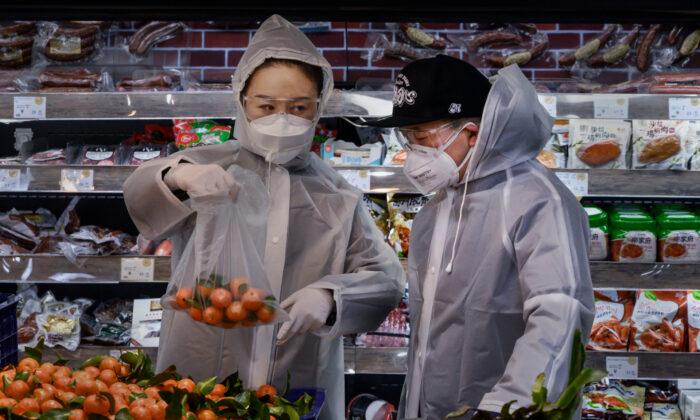BEIJING—Disposable income growth slowed further in China last year while household consumption cooled, as the world’s second-largest economy clocked its weakest pace of expansion since 1990.
Economic growth eased last year as China’s bruising trade war with the United States weighed on businesses and jobs, prompting increased consumer caution despite government measures to stabilize the economy.
Real disposable income per capita rose 5.8 percent last year, according to data published by the National Bureau of Statistics on Feb. 28, slowing from 6.5 percent in 2018 and 7.3 percent in 2017.
Urban households saw their income growth ease to 5.0 percent from 5.6 percent a year earlier.
Real consumption per capita was relatively subdued in 2019, slowing to 5.5 percent from 6.2 percent a year earlier. Food and living expenses accounted for the biggest portion of consumption, unchanged from a year earlier.
GDP per capita grew 5.7 percent last year to 70,892 yuan ($10,108.94), easing from 6.1 percent in 2018.
Job Losses
Rising job losses could hurt incomes and consumption, reducing the chance of a sharp recovery in the economy once the outbreak is contained, economists said.Private firms account for 80 percent of urban employment.
Before the virus outbreak, unemployment had already risen, with the official survey-based jobless rate standing at 5.2 percent in December, up from 4.9 percent in April 2018 as a trade war with the United States pinched firms.
Firms in China’s sprawling services sector, from restaurants and hotels to shops, cinemas and travel agents, have borne the brunt of the outbreak, besides small manufacturers that were just barely profitable, economists said.
“The employment situation is OK in the first quarter, but if the virus is not contained by end-March, then from the second quarter, we’ll see a big round of layoffs,” said Dan Wang, an analyst with the Economist Intelligence Unit (EIU).
Job losses could run as high as 4.5 million, he forecast.





